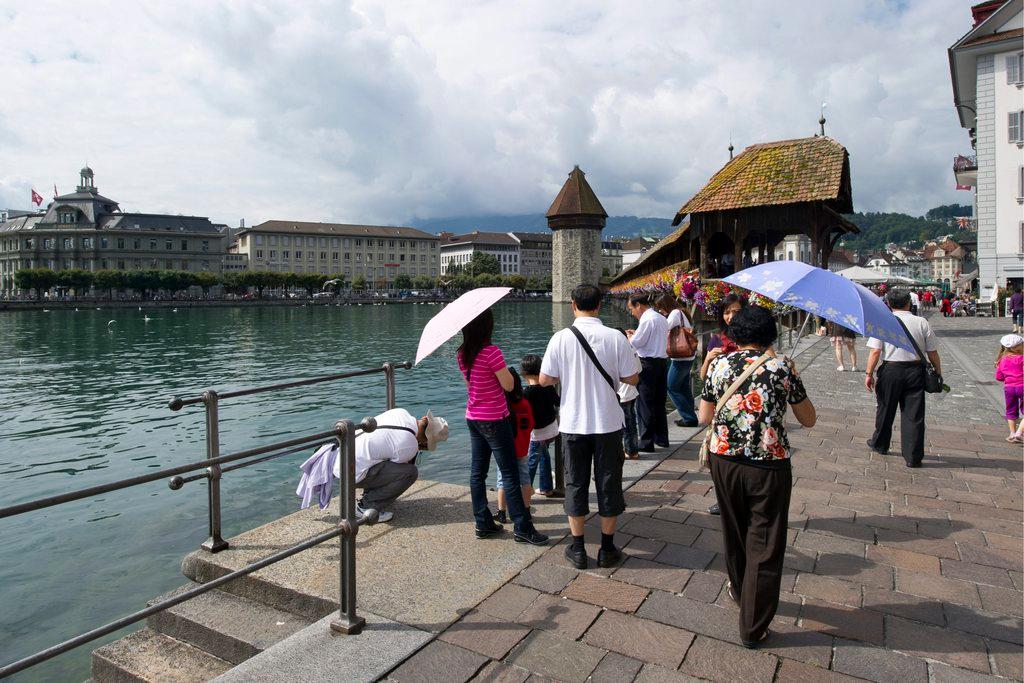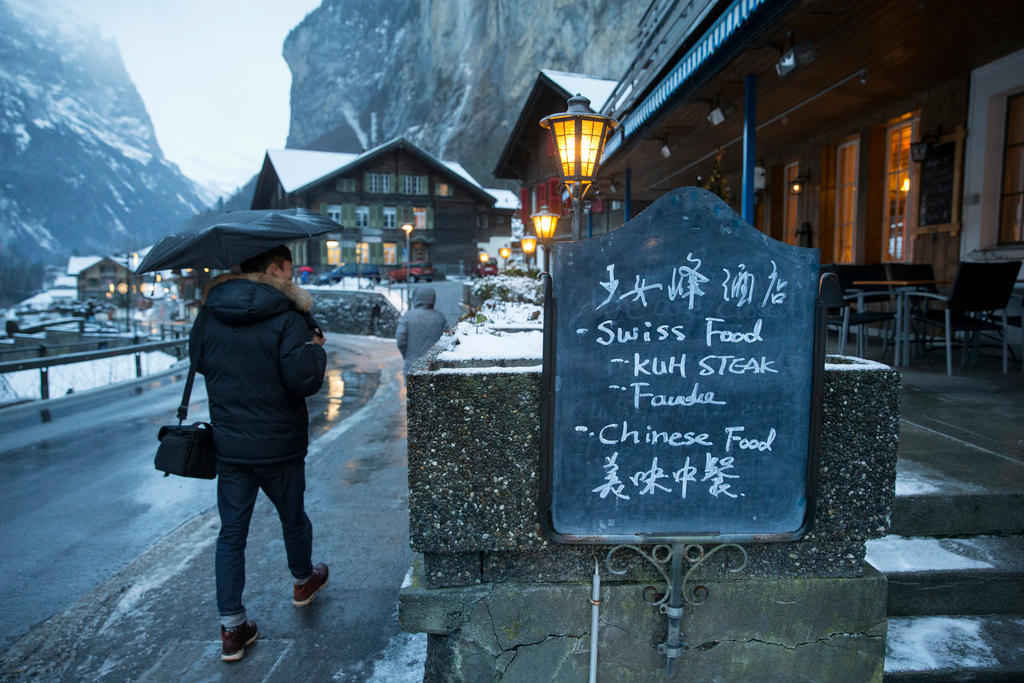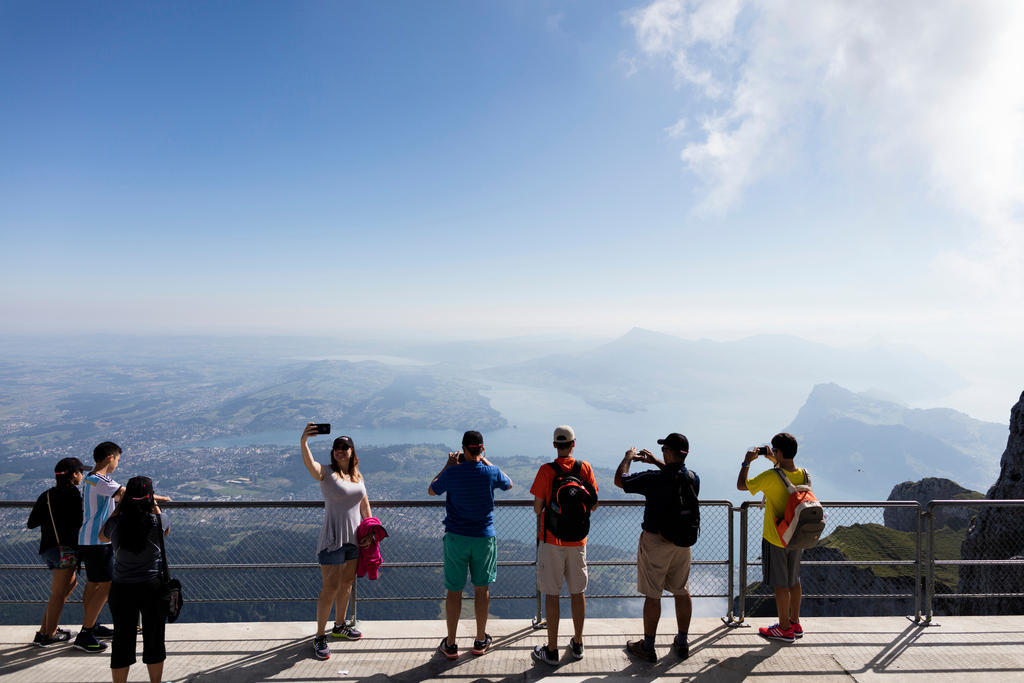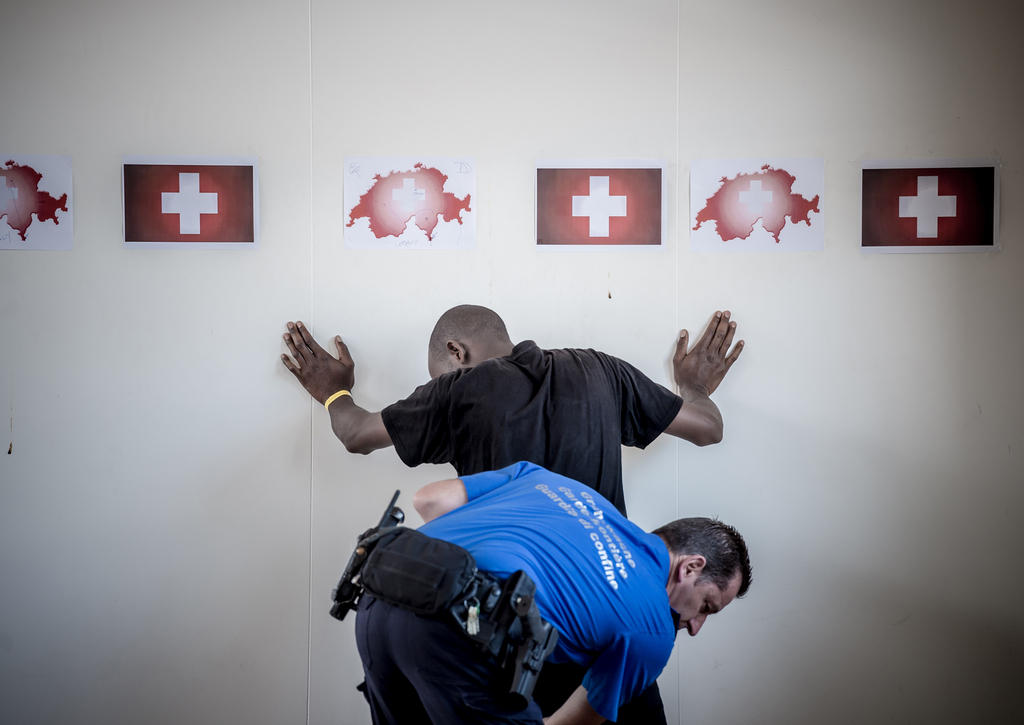Switzerland’s tourism conundrum

The Alps, lakes, villages and valleys of Switzerland have long earned it the reputation of a touristic paradise. So why are more visitors shunning it now?
One thing is certain—the problem has nothing to do with the country’s image. The picturesque cliché of a stable, bucolic, beautiful nation persists, and a visit to Switzerland is on many people’s bucket list. Simon Anholt, a leading advisor of governments who has developed a system to measure national reputation, confirmed that Swiss standing in the eyes of the world remains excellent: the country has maintained a respectable eighth place in his global country rankingsExternal link throughout the past decade.
But such rankings will hardly come as consolation to Swiss hotel owners or ski resorts. Although tourist numbers are increasing worldwide, Switzerland continues to have a hard time attracting the crowds. Figures from the UN World Tourism Organization (UNWTO) show that total numbers of arrivals to Switzerland stagnated in the period 2013-2015, while overall receipts fell by 7%. Another mild decline followed in 2016, and ski resorts struggled due to erratic weather last season. In April, the World Economic Forum (WEF) demoted Switzerland from 6th to 10th in its annual tourism competitiveness report.
What has really gone wrong – and how can it be fixed?
Strong franc and new markets
The standard answer, for a few years, has been the sharp increase in value of the Swiss franc — especially in relation to the euro — which has priced Switzerland out of the market. Jürg Schmid, the former head of Switzerland TourismExternal link who recently stepped down, agrees that it’s the primary cause of the industry’s woes.
“We lost a third of the European market [due to the currency spike],” he said. Indeed, according to WEF, the country comes rock bottom of 136 nations on price competitiveness, while the hotel business is stuck. The numbers of German, French, and Italian visitors — the bedrock of Swiss tourism — have all been declining.
But Simon Lehmann, president of market research group Phocuswright, thinks falling back on the strong franc is simply a “bad excuse”. The issue in Switzerland, he said, is that the tourism industry puts too much emphasis on visitors from Europe.
“We need to adapt to new markets, which means welcoming Chinese and Arabs.”
He also thinks the country needs more innovation in the travel industry and more coordination of the services offered around the country to avoid fragmentation of efforts.
“We have over 560 tourism organisations and destinations and they are all spending money to attract visitors; that is lost marketing dollars.” Instead, “bundling” to create aggregated service platforms for each destination would be more effective, he says.
This is already happening in some places. But others seem to be shooting themselves in the foot: a recent report from Swiss Public Television RTSExternal link, which contacted several tourist villages in French-speaking Switzerland, found that three of the four places were charging administrative fees to prepare and curate itinerary suggestions. For a country that is already an expensive premium destination, such extras are likely to discourage potential tourists. Figures show that many winter tourists, in particular, are already snubbing Switzerland for cheaper destinations like Bulgaria, Slovenia, and Montenegro.
Swiss Tourism has a mandate to coordinate and advise, from the federal level, the marketing of the tourist destinations across the country. Its former director Schmid believes the organisation is already efficient at building “cooperation platforms”, as he puts it, through co-financing and marketing collaborations with hotels and destinations. For example, Swiss Tourism offers a single platform where tourists can book all of their travels and hotel stays in one go.
And what about the new El Dorado of the Asian markets? Schmid says that Switzerland Tourism is operating according to a dual-market strategy but that “Europe remains priority number one” mostly because it’s possible to build up customer loyalty with proximity.
He also points out that Europeans travel to more diverse places in Switzerland like “the small and hidden valleys in Graubünden and Valais”. Indian and Chinese travellers, on the other hand, have a few select “hotspots” like Interlaken, the Jungfrau region, Geneva, Zurich or the panoramic routes. And although Asian tourists spend more on average than European travellers, “the watch industry gets most of the benefit,” says Schmid.
Keeping the reputation
Ultimately, this means that not only does Switzerland need to attract new visitors, but it also needs to incentivise them to spend more when they are here. Does the country therefore need a new “grand strategy” in order to maintain its position as a prime tourist destination? After all, much of the tourism growth foreseen by the UNWTO between now and 2030 will continue to flow towards the emerging markets of Africa, the Americas and especially Asia.
To stand out from the crowd, Anholt, the government tourism advisor, thinks Switzerland needs to focus on becoming “even more Swiss than it already is” by playing to the clichés and doubling down on its reputation for good governance.
For his part, Schmid thinks success is a question of investing ever more in quality, education and infrastructure in order to ensure that the world’s view of Switzerland as a “premium, best-in-class” destination does not slip.
“In tourism, you need to make a choice,” he says. “Are we cheaper, or are we better?” For Switzerland, and for Schmid’s successor, the answer is already clear. The challenge is finding people willing to pay for “better”.

In compliance with the JTI standards
More: SWI swissinfo.ch certified by the Journalism Trust Initiative














You can find an overview of ongoing debates with our journalists here . Please join us!
If you want to start a conversation about a topic raised in this article or want to report factual errors, email us at english@swissinfo.ch.